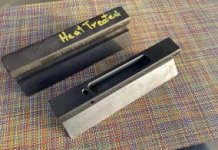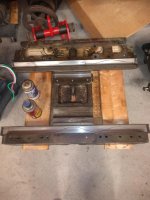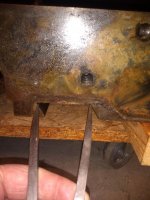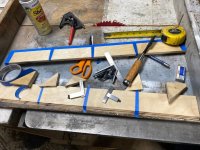dgfoster
Diamond
- Joined
- Jun 14, 2008
- Location
- Bellingham, WA
One “hole” in my line of 8” to 48” straight edges seems to be the 24” size.
Many of you know I make 8” and 18” prism/parallel/precision level castings. And I make a lightweight 36” camel back broad-soled camelback straight edge. These have been quite popular, but I have noticed a number of requests for 24” straight edges. (I also make a 48” camelback and a unique-to-the-industry 30” box square)
I am considering making a 24” Featherweight to fill out the line. But I am wondering which would be more useful—-a camelback design or a longer prism? To my mind the prism would have more functionality as I would make it along the lines of the 18, just longer and maybe slightly wider. The 18 has proved quite lightweight and rigid. But I would also guess some folks might prefer a more traditional camelback design but with the broader base characteristic of my 36. (I cannot see advantage to a camelback under 24” as opposed to a prism.) I would expect the 24 would not have a thick sole that could double as a prism, but would listen to arguments in favor of a thick sole.
The 18” prism weighs 12 pounds as cast and machines to little over 10 typically. I would guess the 24 would come in around16 to 18 as cast. The 24” camelback with a thin sole would be about 20 as cast and with a 1” thick sole would make it come in about30 pounds.
The eight

The 18


The 36

Anyway, here is a chance to weigh in (so to speak) on the design of the next Featherweight. The plan is to cast it and heat treating it to the high standard you’ve come to expect from my castings.
Denis
Many of you know I make 8” and 18” prism/parallel/precision level castings. And I make a lightweight 36” camel back broad-soled camelback straight edge. These have been quite popular, but I have noticed a number of requests for 24” straight edges. (I also make a 48” camelback and a unique-to-the-industry 30” box square)
I am considering making a 24” Featherweight to fill out the line. But I am wondering which would be more useful—-a camelback design or a longer prism? To my mind the prism would have more functionality as I would make it along the lines of the 18, just longer and maybe slightly wider. The 18 has proved quite lightweight and rigid. But I would also guess some folks might prefer a more traditional camelback design but with the broader base characteristic of my 36. (I cannot see advantage to a camelback under 24” as opposed to a prism.) I would expect the 24 would not have a thick sole that could double as a prism, but would listen to arguments in favor of a thick sole.
The 18” prism weighs 12 pounds as cast and machines to little over 10 typically. I would guess the 24 would come in around16 to 18 as cast. The 24” camelback with a thin sole would be about 20 as cast and with a 1” thick sole would make it come in about30 pounds.
The eight

The 18


The 36

Anyway, here is a chance to weigh in (so to speak) on the design of the next Featherweight. The plan is to cast it and heat treating it to the high standard you’ve come to expect from my castings.
Denis










